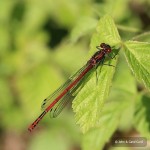Possibly the last of my “New Year” posts. We’re a long way from our telephone exchange and have been suffering from a paltry 1.3Mb broadband speed for some time. Whilst investigating the supposed availability of fibre optic broadband services in our area, I questioned the reality of my supplier’s estimated speed: 9Mb. I questioned it, I explained, because they had originally estimated 3Mb for my copper connection and I was actually getting less than half that. They rummaged around and eventually said, “our 3Mb estimate was based on ADSL2 which, it appears, you were never migrated to. And, yes, 9Mb is realistic for fibre.”
“Hmm, please migrate me to ADSL2, then“, I rejoined, based upon this being less upheaval [see below].
They did just that and, after the obligatory 1-2 week settling down period, I was getting a pretty consistent 2.3Mb download speed. Better – not great but better.
One of the things putting me off migrating to fibre had been the fact that, apparently, the fibre router needs to be connected into a master phone socket (which we didn’t have, anyway) rather than an extension socket, as in my current setup. For laptops on wi-fi, that’s no problem but my old desktop would become an effective boat anchor. It was with this in mind that, after much mulling over and fretting, I eventually ordered my new Dell XPS desktop complete with a wi-fi card, pretty much at the same time as I bit the bullet and ordered an upgrade to a fibre optic broadband connection. Brave boy!
This, of course, required a new router which PlusNet supplied as part of the 18-month contract. As well as coming with a BT OpenReach engineer to sort out the master socket issue, It came with what appeared to be comprehensive instructions about getting connected. Interesting reading: not only would Mr. OpenReach be fitting my master phone socket but he would also fit a fibre modem into which the router gets plugged. Both modem and router would need power. Two power sockets, yikes! It gets more and more difficult. Do I have two spare sockets near where a master phone socket should go? No, of course not.
Long story short, he turned up and, by running a cable round a couple of doorways, we found a suitable site with enough power points. He went to the road box to switch us over to fibre and returned to get the router bit done. No Internet connection. Internet at modem: OK. Internet at router: not OK. Much head scratching – “I’ve only ever fitted BT Homehub, not one of these Netgear contraptions”. With a cheery, “you’ll have to call PlusNet”, he left.
To be fair, I knew the instructions mentioned connecting the router and making tea whilst waiting for 15 minutes for it to install itself. Mr. OpenReach had been a bit hasty. It did eventually come up … but, it came up with a different SSID from the documentation and unsecured. A swift phone call to PlusNet support soon had us in teh router configuration panels changing a few of the relevant settings. We were back on-line … and secured.
Out of evil curiosity, I went to www.mybroadbandspeed.com.uk and ran a test: 20Mb download, 1Mb upload. Completely unexpectedly, the service appeared to be twice as fast as the estimate. Intriguing.
I will keep my eye on it, we’re not that close to the box.














Recent Comments